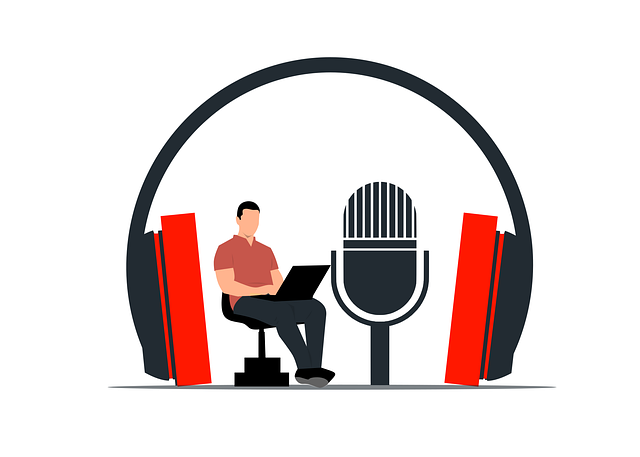Creating a high-quality podcast isn’t just about having great content; it’s also about ensuring your audio is clear and professional. Choosing the right audio editing software is crucial to achieving this. Here, we’ll explore some of the top free audio editing software available, highlighting their features, pros, and cons to help you decide which is best for your podcasting needs.
1. Audacity (Windows, MacOS, Linux)
Website: (https://www.audacityteam.org)
Audacity is a well-known name in the audio editing world, celebrated for its versatility and functionality. This free, open-source software is compatible with multiple platforms, making it a favorite among podcasters. While there’s a bit of a learning curve involved and it doesn’t look as pretty as many high-end options, Audacity is sure to get the job done. You can record and edit your entire show on it, and you’ll end up with audio some people will never think was edited on free software!
Features:
- Multi-track editing
- Wide range of effects and plugins
- Noise reduction capabilities
- Spectrogram view for visualizing frequencies
Pros:
- Completely free and open-source
- Extensive features and tools
- Compatible with Windows, MacOS, and Linux
Cons:
- Steep learning curve for beginners
- Interface may appear outdated and complex
2. Ocenaudio (Windows, MacOS, Linux)
Website: (https://www.ocenaudio.com)
Ocenaudio is another free, open-source, and multi-platform audio editing software. It is particularly user-friendly, making it an excellent choice for those who are less technically inclined. Admittedly, Audacity can be intimidating with the number of features jampacked into the software. For those averse to complex-looking interfaces, Ocenaudio may be a better choice for you.
Features:
- Real-time effect application
- Support for VST (Virtual Studio Technology) plugins
- Multi-selection for editing intricate audio files
- Efficient memory management for handling large files
Pros:
- Intuitive and simple interface
- Efficiently handles large files
- Suitable for beginners
Cons:
- Fewer features compared to Audacity
- Limited advanced editing tools
3. GarageBand (MacOS)
Website: (https://www.apple.com/mac/garageband)
For Mac users, GarageBand is a powerful and accessible option that often comes pre-installed on devices. Known for its sleek interface and ease of use, GarageBand is ideal for new podcasters, so the whole system is pretty intuitive. If you’re not sure about some functions, there are tons of videos on YouTube that can help you out.
Features:
- Multi-track recording and editing
- Wide array of virtual instruments and effects
- Easy sharing options to platforms like SoundCloud
- Built-in lessons for music and podcast production
Pros:
- User-friendly and intuitive interface
- High-quality sound and effects
- Integrated with other Apple products and services
Cons:
- Only available on MacOS
- Less flexibility in advanced editing compared to professional software
4. WavePad (Windows, MacOS)
Website: (https://www.nch.com.au/wavepad/index.html)
WavePad offers a robust suite of editing tools for both Windows and Mac users. While the free version is limited to non-commercial use, it provides a good way to test out its capabilities before committing to a premium version.
Features:
- Supports multiple file formats
- Advanced audio effects like reverb, echo, and noise reduction
- Batch processing for multiple files
- Integrated VST plugin support for studio effects
Pros:
- Full-featured and powerful editing tools
- User-friendly interface
- Free version available for trial
Cons:
- Free version is limited to non-commercial use
- Premium version required for full features
5. Hindenburg Journalist (Windows, MacOS)
Website: (https://hindenburg.com/products/hindenburg-journalist)
Hindenburg Journalist is designed specifically for podcasters and journalists, providing an intuitive platform that prioritizes storytelling and ease of use.
Features:
- Voice profiler for consistent audio levels
- Automated levels and EQ
- Clipboard for organizing audio clips
- Direct publishing to podcast platforms
Pros:
- Tailored for spoken-word content
- Simplifies complex editing processes
- High-quality audio output
Cons:
- Free trial version is limited
- Subscription-based pricing model for full access
Conclusion
Choosing the right audio editing software can make a significant difference in the quality and success of your podcast. Whether you prefer the extensive features of Audacity, the user-friendliness of Ocenaudio, the sleek interface of GarageBand, the comprehensive tools of WavePad, or the specialized features of Hindenburg Journalist, there is a free option that can meet your needs. Evaluate the pros and cons of each to determine which software aligns best with your podcasting goals.
For more tips and resources on podcasting, visit our blog regularly and stay updated with the latest tools and strategies to make your podcast a success! Visit Preneurdemy for more resources or get the comprehensive course on podcast secret. Happy Podcasting!

1 Comment.